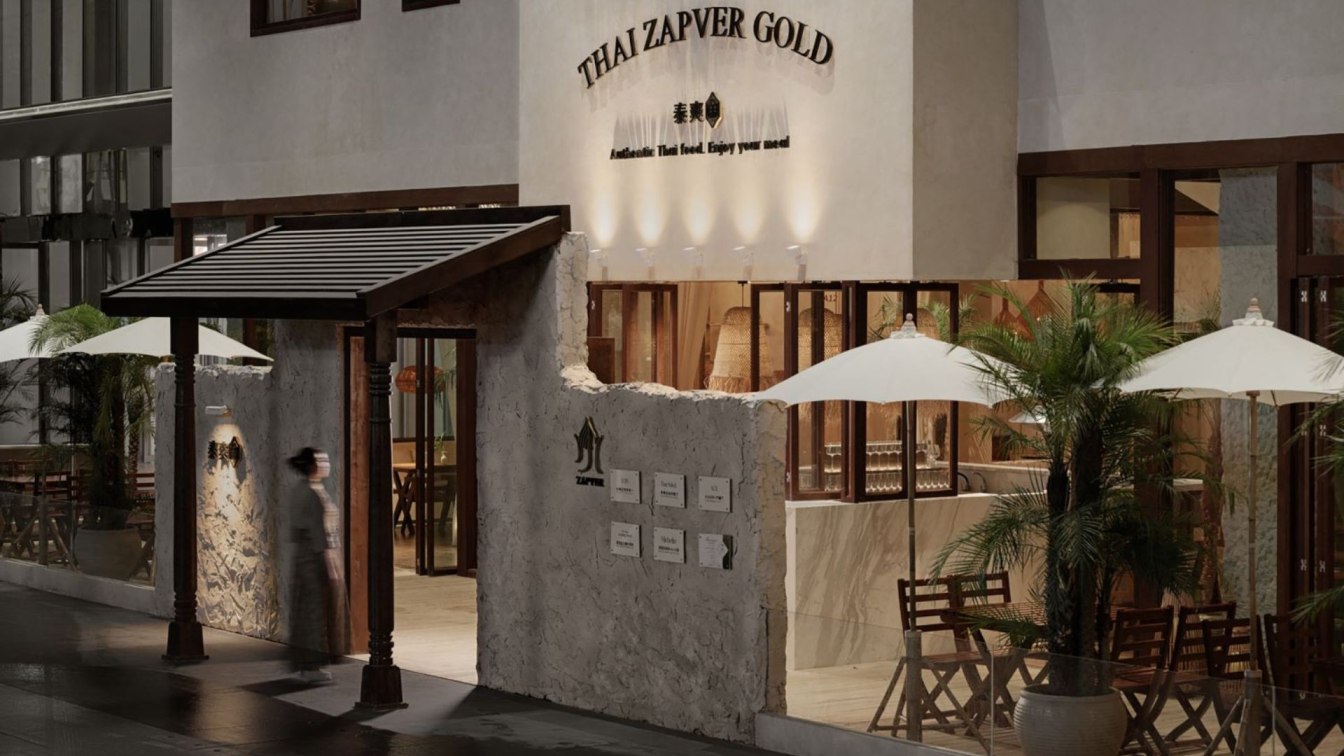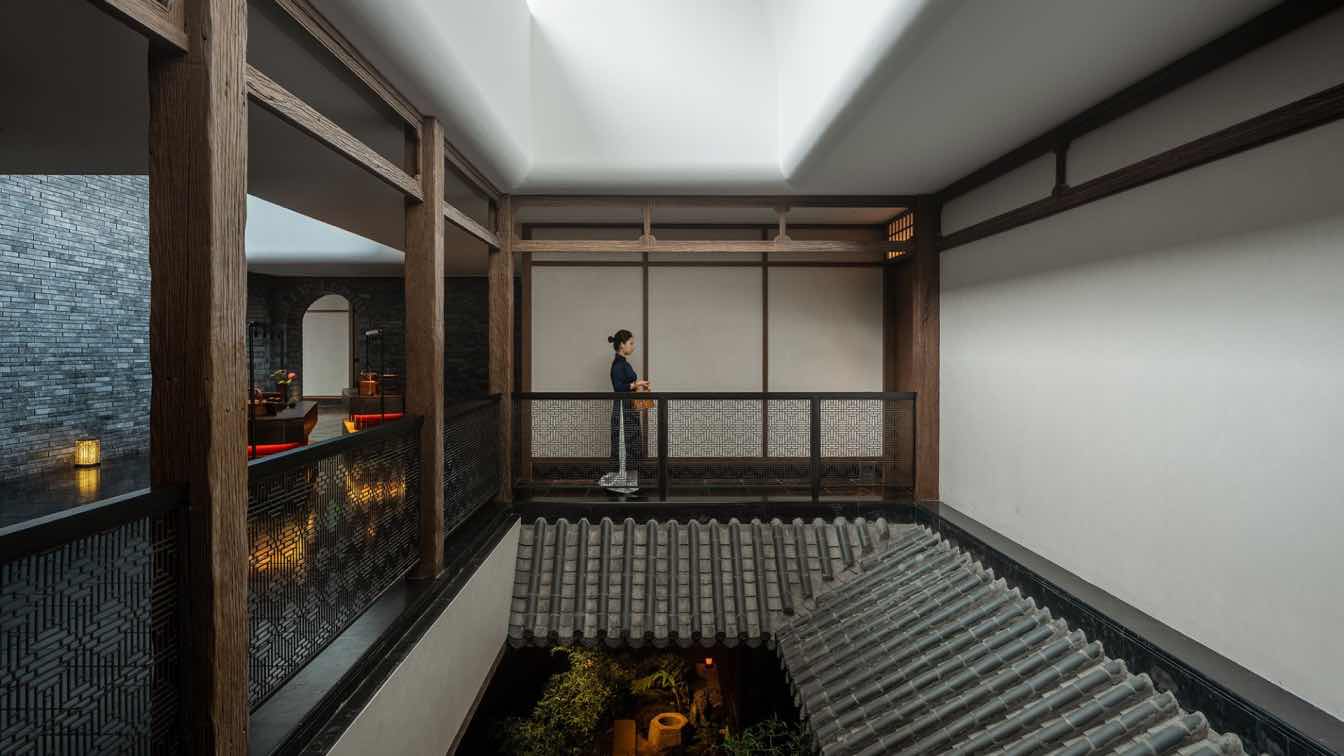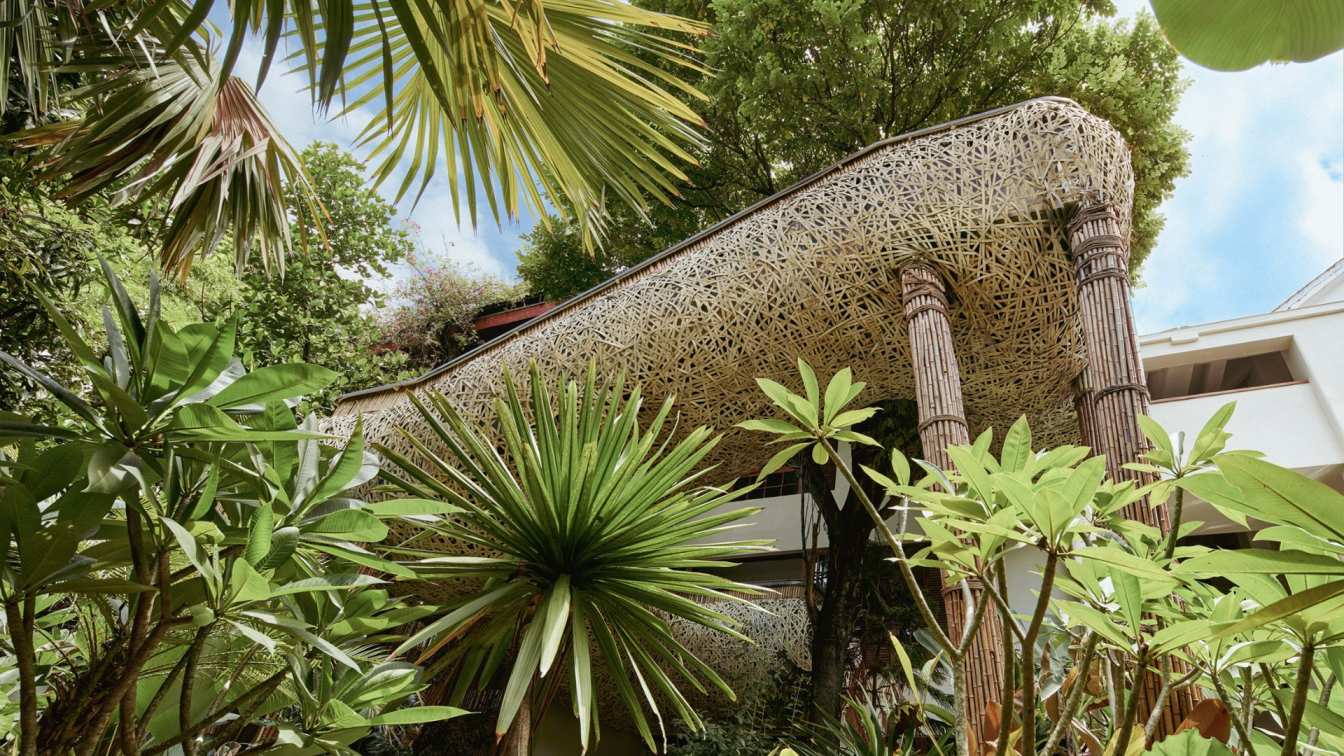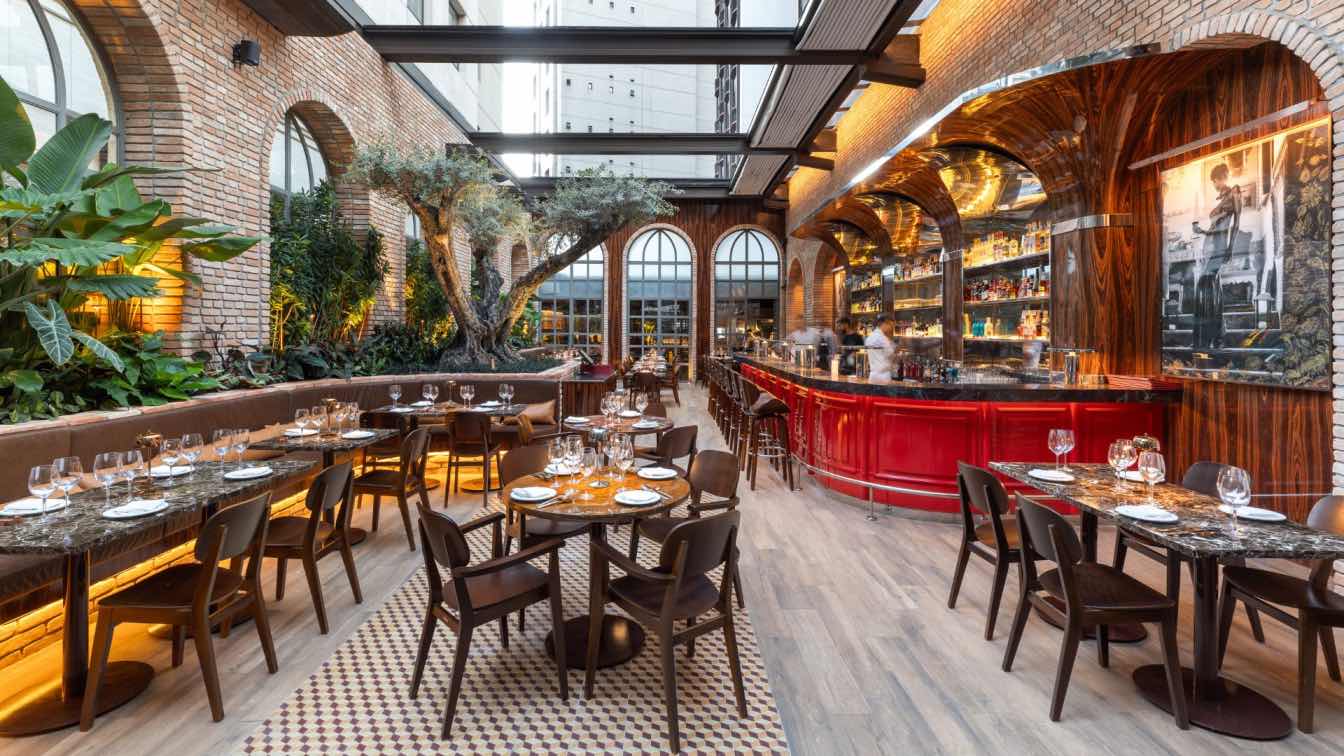Aurora Design: Thai Zapver Gold The Beauty and Light of 5°37' N latitude.
The preparation method and culinary techniques of ingredients showcase the local people's wisdom and urban culture. Exploring taste can also be a way of observing the city. When Thai cuisine brings its unique flavors to our daily dining table, people may fall in love with this type of cuisine because of its regional characteristics, and thus feel or reminisce. It is the golden sandy beach, the salty sea breeze blowing by, the fluttering curtains, the balance and tranquility under the sunshine, the natural beauty and life of light and beauty. Zapver Hello World store is located in the Hello World Shopping Center in Kunming. The sandy-colored building has 2 floors, designed and completed by designer Yang Xuewan and Aurora Design team.
This is the fourth store of the brand, and also its first flagship (luxury) store. Derived from Southeast Asian design, it also assists in the transformation of Thai cuisine in the city of Kunming. In terms of design, experiential dining spaces play a very influential role in exploring the process of urban transformation. How can one retain self-characteristics in design while integrating local culture? When it goes from "local daily" to "exotic features", how can the space fulfill the mission of integrating both regional cultures? At the entrance of the restaurant, the designer has created a front courtyard entrance, with a depth of staggered changes that highlight the transition between interior and exterior spaces, achieving an organic fusion of urban and natural elements.
Thai culture, with its blend of architecture and open interior design, is integrated into the lush greenery. It creates an environment where diners can enjoy delicious food while relaxing and returning to nature. The traditional Thai triangular roof structure is recreated here, with a half-meter-high glass curtain wall enclosing a natural breathing outdoor space under the roof, which is made of gray micro cement. Tables and chairs arranged under white canvas umbrellas make the space look neat and free. The lush green plants create a summer holiday atmosphere, inviting passers-by to enjoy a pleasant dining experience. After passing through the wooden porch and outdoor seating area, entering the interior space, the entire space is wrapped in a mild sand-colored inorganic gray plaster wall.

The slightly yellowish light shines through the gaps in the rattan lamps, leaving thin and long textures on the wall. The alternating separation and connection of different space areas balance the essential needs of privacy and openness in the restaurant. The overall visual style of Zapver is mainly based on white curtains. The wooden tables, rustic rattan, and soft cushions provide a beautiful and relaxing dining atmosphere for people. To a certain extent, this can be regarded as the core representation of Zapver restaurant,embodying the freedom of youth and dining experience.
The highly saturated colors can give people a visually stunning experience. The white curtains serve more as a "screen" for the space, gently dividing the boundaries of the open space, and creating an atmosphere of seaside vacation. The reed roof on top of the curtains not only adds a natural and rustic texture to the space, but also embodies a sustainable design practice. Everything is intertwined to create a quiet, comfortable, fresh, natural, romantic and artistic picture. Materials are a deep desire for memory, a sense of identity with culture, scene, and life structure that arises from the tearing of post-modern culture.
The rough stone walls are intertwined with the elegantly shaped spiral staircase, creating a clever contrast of thickness and fineness in the space. Exploring the second floor space along the stairs that grow upwards, the open dining atmosphere gradually becomes more private and quiet. The second floor space continues the natural and rustic space tone of the first floor, and has richer detail processing on top of it. The entrance to the private room, which is broken by a hammer, presents a mottled texture, and fingers can feel its uneven texture by touching the cut surface.

On one side of the private room is a richly textured mosaic stone wall, and on the other side is a granular slate. Under the even washing wall lights, it presents a unique light and shadow texture. AURORA DESIGN believes that exotic cuisine is not only a medium for cultural transmission, but also different from the standardized and unified layout of cross-border catering in various cities in China. Exotic cuisine appears to be more flexible and proactive in the translation and reproduction of culture. People's sense of happiness towards life is about finding ways to escape from the complexity and embrace simplicity and freedom.
The Zapver Hello World restaurant is both hidden in the bustling city and in nature. It serves as a cultural space for dining and a place for spiritual relaxation. Inside this space, intricate decorative materials are minimized, leaving only things that can withstand the test of time: thatched grass, wood, stones, gravel, and vines. These natural materials continue to grow in another form in the space.
With simple yet textured spatial design, the restaurant finds a balance in creating a comfortable dining experience to inspire an imaginative aesthetic.






























About Designer
Yang Xuewan
Founder of AURORA DESIGN
Has received awards include "2020 Top 12 Designers in China Design Star ", "Andrew Martin Recommended Designer of the Year", "2022 Bauhaus Award", "2022 Global Future Award", etc.
About Aurora Design
Aurora Design is a high-end interior design agency specializing in spatial design, committed to creating empathetic and aesthetic spaces for consumers and interpreting the current trends of consumer experience.
Adhering to the design philosophy of "creating fantasy beauty", after years of brand services and project implementation, Aurora Design has reinterpreted the inherent brand format and provided comprehensive and ultimate design consulting services for elite clients in areas such as customized wedding photography spaces, commercial retail, independent/chain catering iteration, exhibition spaces, high-end residences, and art installations.





